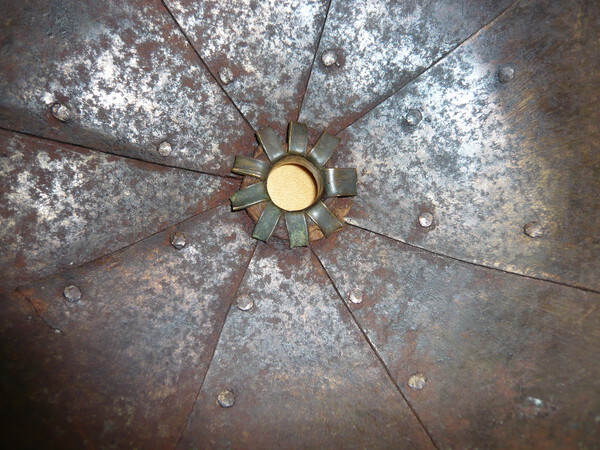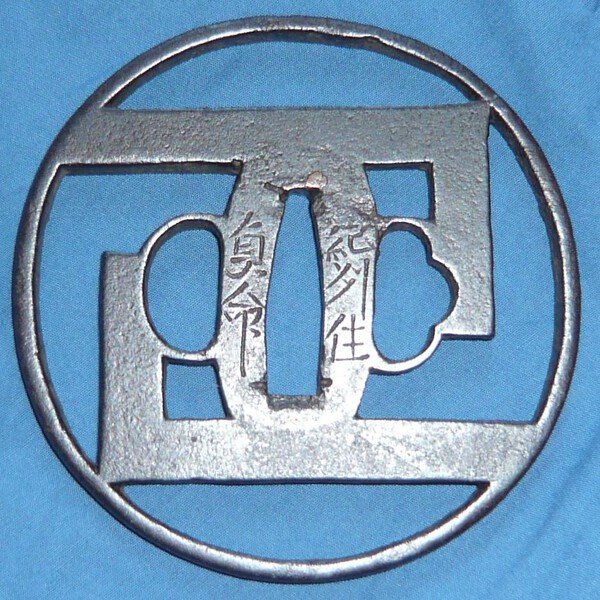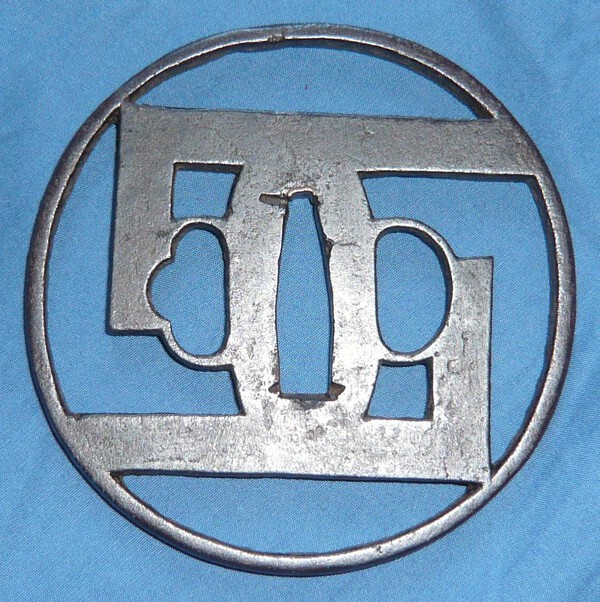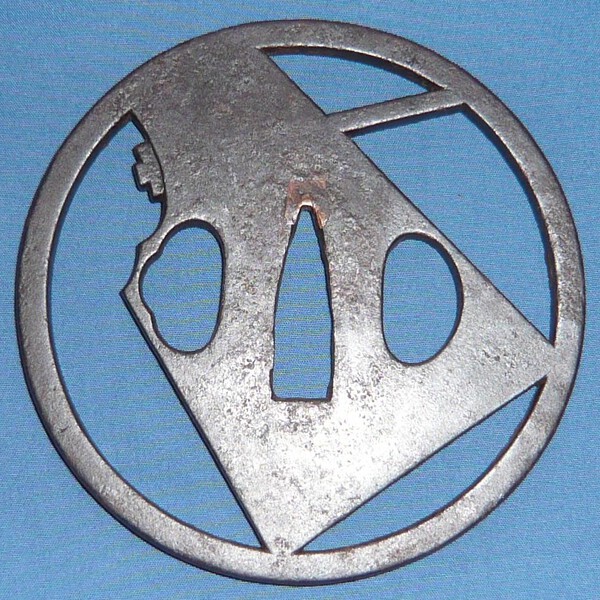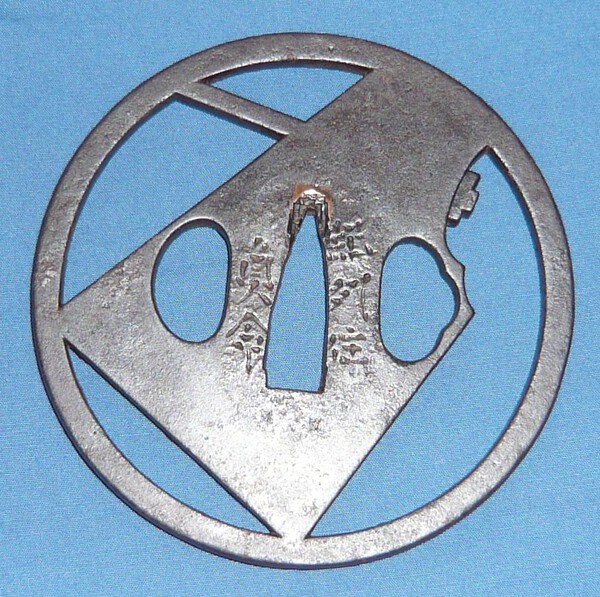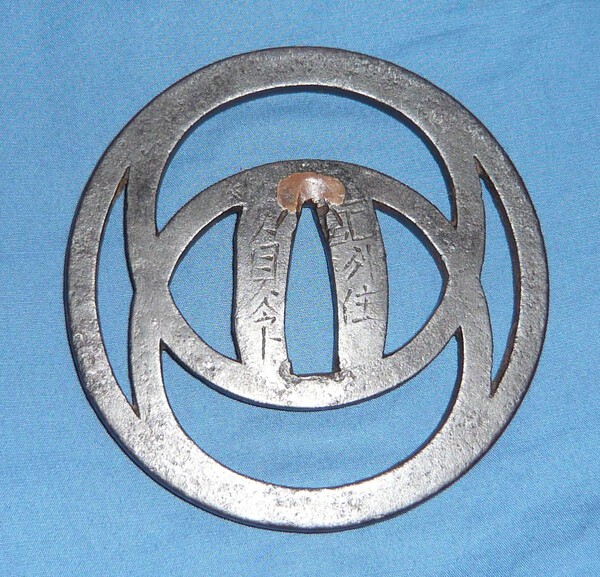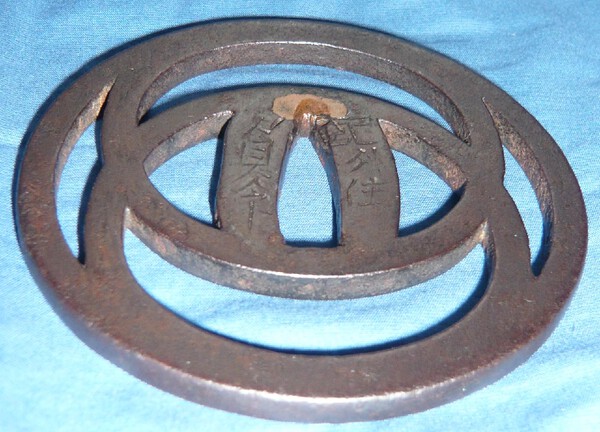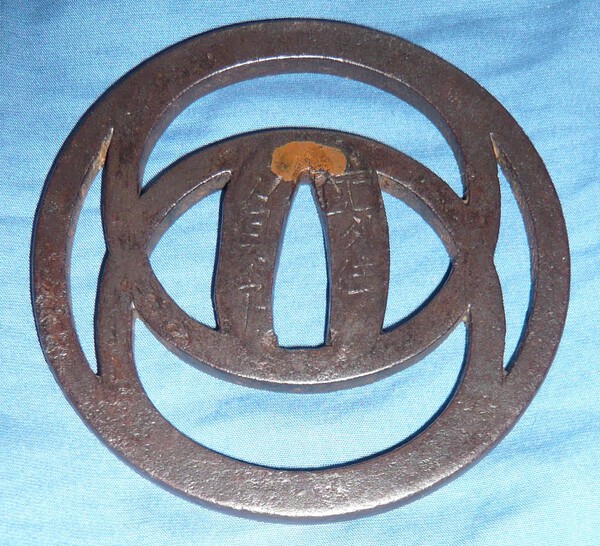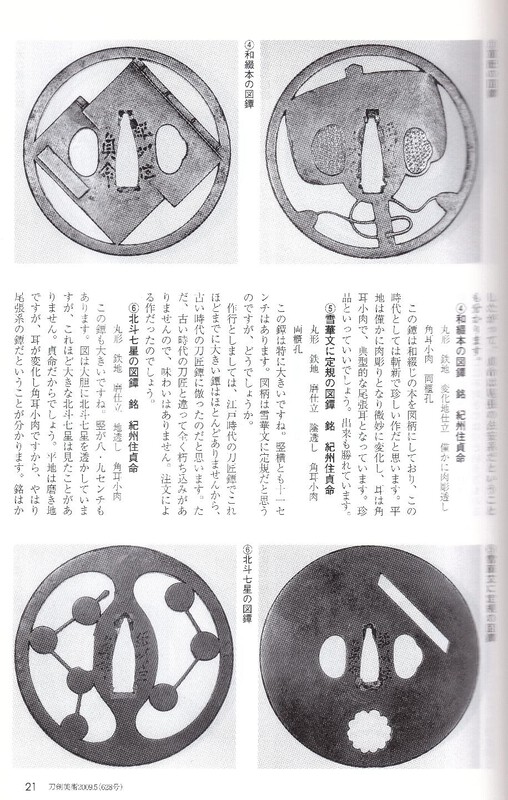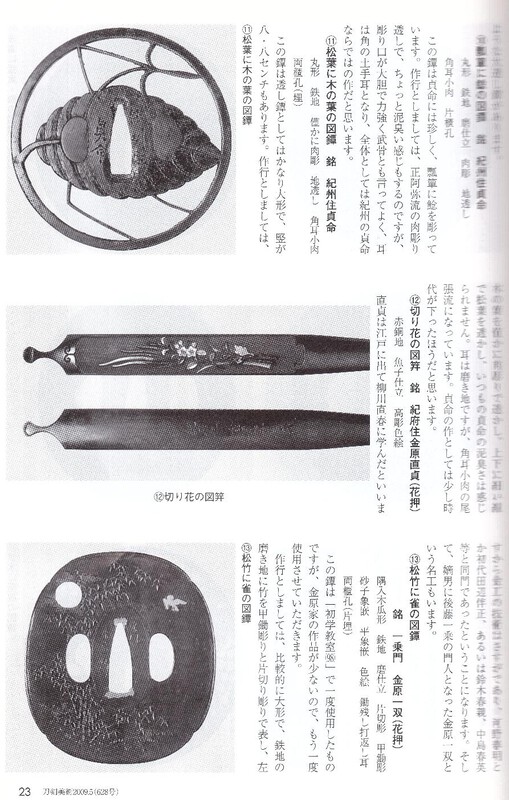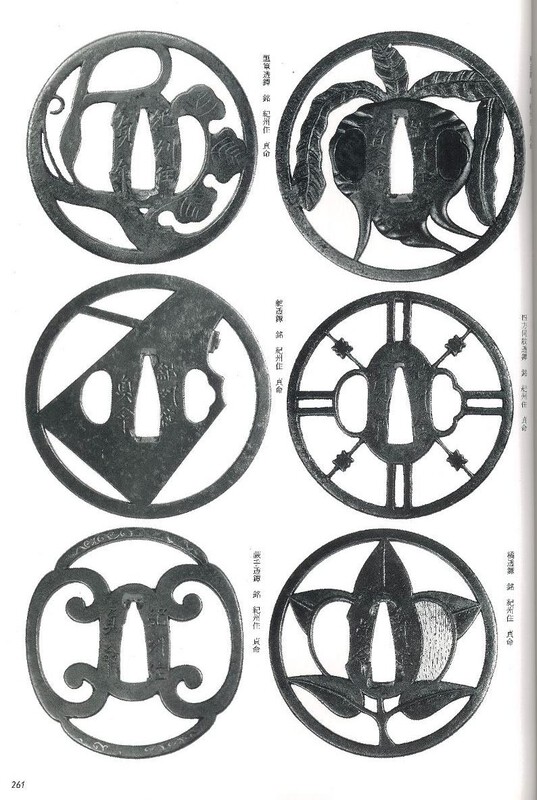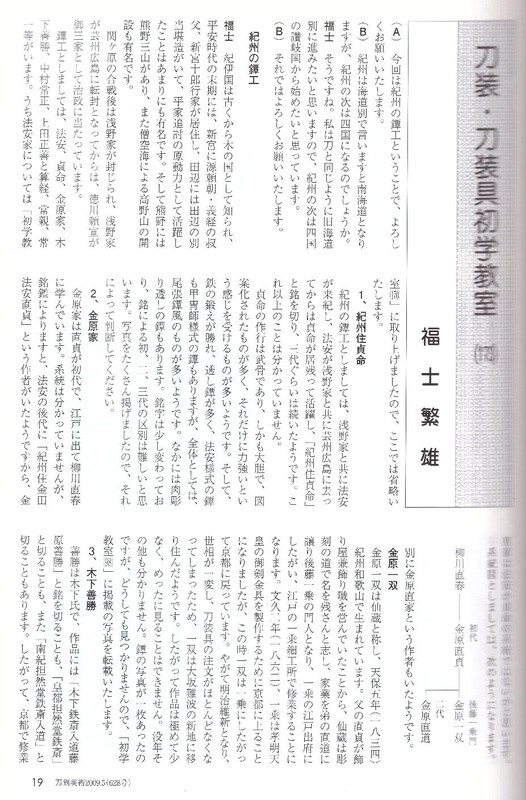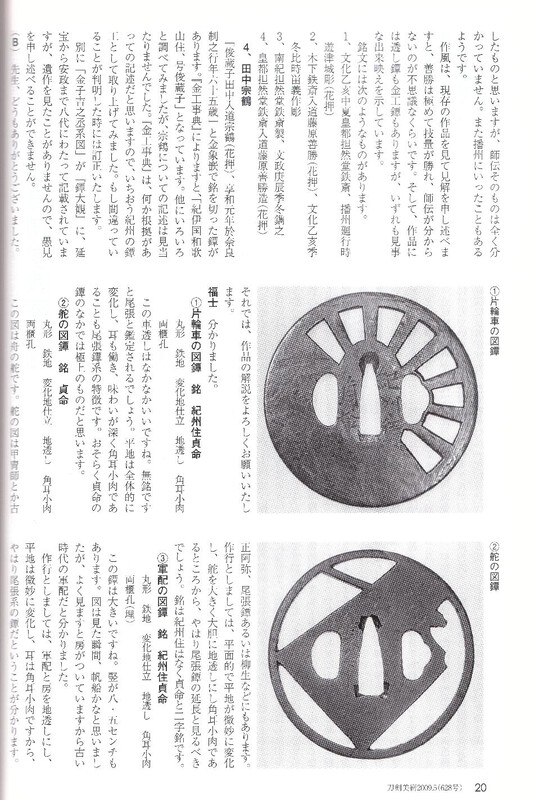
Higo-san
Members-
Posts
707 -
Joined
Content Type
Profiles
Forums
Events
Store
Downloads
Gallery
Everything posted by Higo-san
-
Thank you very much, Ian! Your advice is much appreciated ! It is very interesting that there are indications of an originally lacquered finish. At closer examination I have found tiny spots (close to the rim and in the corners) which look like thin layers of old black lacquer - unfortunately it is almost impossible to make a picture of those parts. I am really looking forward to what the suggested treatment may reveal. Many thanks again, Chris
-
Many thanks and vielen Dank for your help, Justin and Uwe! A very good point concerning the number not being an arsenal inventory number; I think I could have reached that conclusion myself . Nevertheless I like the idea about the shikoro, Uwe. The shikoro of this kabuto is also covered in thick layer of glued newspapers and paint which seem to keep the rust together . I will carefully try to remove it and maybe I will find a matching number on it - in any case I will let you know. Your point about ranking is understood, Justin. My thinking was that it may have been possible to roughly determine the status of person (common soldier, low ranking or high ranking samurai) by looking at his armor - like it is possible to determine the rank of soldier nowadays by looking at his uniforme (in order to e.g. make the chain of command work in a battle). But even if it may be easy to seperate between common soldiers and high ranking samurai, this may well be a bad comparisons... One last question I would like to ask is about restoration and conservation of the piece. I have a feeling that the color of the kabuto should be different (it looks almost the same like the color of the shikoro which has been definately repainted in modern times (if not the early Edo/Momoyama Japanese read western newspapers in their spare time) and completely different to the color on the inside of the helmet). Do you have any ideas of how to carefully clean the kabuto without destroying it? Should it be repainted/relacquered afterwards in order to protect it from rust? Please forgive my lack of basic knowledge about preservation of Japanese kabuto but at least to my eyes it looks like most of the suji-bachi kabuto seem to have had a lot of restoration work done on them (which is quite understandable if you look e.g. at the lacing, lacquer work etc). And when it comes to down to treatment of a metal surface, - at least from my tsuba experience (sword polishing is of course a completely different issue) - noone is willing to write down their methods of restoration in a book (like carrying an iron tsuba in a good old Levys or giving them a lot of fresh air to accelerate the patination process and so on) although almost everybody does it. I am also happy for PMs if people do not want to share and discuss their ideas in puplic. Best, Chris
-
-
Dear fellow board members a couple of years ago, I felt a strong urge to add a kabuto to my Japanese collection. It had been restored in a smart but not necessarily professional manner by e.g. sewing the inside of a baseball cap to the area where once an old Japanese fabric used to comfort the bearer and stuff like that. Anyway, I did not mind about that at all since the helmet still looked impressive enough. Lately the idea of learning something about that field came to my mind and I started to undo the restoration (hoping to perform a more professional approach one day in the (far far away) future). I have attached some pictures of the bowl of the helmet. I could not find a signature - only a number (十五) on the outside of the bowl which had been covered by the shikoro before. My best guess is that this is kind of an arsenal number stating that this very helmet was made number 15 out of an unknown number of helmets ordered for a local warlord. I have shown the helmet to someone more educated in that field and he told me that the helmet may date be from the Momoyama times and may have been made for the personal guard of a higher ranking samurai or a local lord - at least the last part of the thesis would be in line with the number I found. Can you provide me with any more in-depth information on the helmet (concerning age, quality or probably even a school)? Who would have been the owner of helmet like that (a common soldier or even a lower ranking samurai)? Then I can start a research based on that information. Any information is appreciated! Chris
-
Your kozuka depicts parts of a rats wedding ceremony; I also quite like that theme and your kozuka though I fear it is gimei (a nice reference piece of Haruaki Hogen was discussed here: http://www.nihontomessageboard.com/nmb/ ... =2&t=13993). All the best, Chris
-
Many thanks for your kind words, gentleman! I will look through the different Higo artists and try to find a similiar tagane "signature". Best, Chris
-
I forgot to tell the dimensions: it is 8.2 x 7.7 x 0.35 centimeter.
-
Dear fellow board members, I recently acquired a tsuba which fascinated me from the very moment I first saw it. It`s (almost Jingo like) wet iron surface and the very fine inlays are amazing. I would be happy for any opinion on this tsuba. I have seen a very similiar design on a tsuba in the Boston Museum collection attributed to Shoami school. Nevertheless I believe this one to be made by someone who was trained by a Higo man because of the "wet" iron surface, the beautiful Zogan work etc. The tagane may also indicate a certain maker. I hope you will enjoy this one, Chris
-
How can you tell, Curran? I had two rather high-class Tanaka tsuba in hand lately (both published, at least one with Juyo status) - judging from the pictures only I cannot see much of a difference in workmanship... Best, Chris
-
Thank you so much, Morita san !
-
Dear fellow NMB members, I have attached the picture of seppa-dai of one of my tsuba - after what felt like three hours research I gave up trying to figure out what it says besides ???Province??? Ju Masa???. Could someone assist? Thank you very much, Chris
-
Hi David, I totally agree with the attribution to the Kamiyoshi school from what I can see from the pictures. Of course, judging the quality of the iron from photos is almost impossible. But have you noticed how the carving of the leaves fades into the seppa dai? This is done in a rather nice way and you can find this on many Higo tsuba. I think you cannot attribute a tsuba to a certain Kamiyoshi master judging only from photos - at least as long as there are no very unique features like Rakuju`s famous almost Matashishi like zogan. But in my uneducated opinion, I would not put my bets on Fukanobu. His tsuba have a different "feeling" - even on pictures. Nevertheless your tsuba looks really nice - and not being made by Fukanobu does not at all mean that your tsuba is of minor quality. Best, Chris
-
Great tsuba, Mike! THANK YOU VERY MUCH for sharing these. It is very interesting to see that many versions of Wachigai. Although some versions seem almost identical, the signatures differ alot. This allows two possible conclusions (under the assumption that no tsuba is gimei): 1) some of the tsuba are made by the very same person; but this person used a huge variety of writings. If this is true, a theory about only two generations of artists signing Kishu Ju Teimei would be possible. 2) the different Teimei artists worked very similiar; then a two-generations theory would - at least in my eyes - very hard to defend. It would be interesting to have a genealogy of the Kishu school and the Teimei masters.
-
Hi Justin, are the pieces in question (all) signed? And if so: how are they signed? Chris
-
Since the question about kantei points came up, I wanted to post another Kishu Teimei tsuba with a sashigane design. I believe it was made by the first Teimei master because of the following reasons: - the rim of the tsuba is still rather small and strongly reminds me of older Ko-Kyo sukashi tsuba - there is plenty of granular tekkotsu on the rim and even some areas where I believe to see a technique called yakite (which is quite common on older tsuba from the Owari province but very rarely seen on later Kishu Teimei tsuba) - the iron surface shows some - what I can only describe as - ko-nie particles; in general the iron quality is much better than on the other tsuba I posted (from my collection) - the form of the hitsu ana (especially the kogai hitsu ana) reminds me of older sukashi tsuba I am looking forward to your comments! Chris
-
Hi David, I can see your point! Nevertheless I do not believe that the tsuba seen in your link is a Kishu Teimei tsuba due to two main reasons: 1) the rim should be "sharper". Please compare your former tsuba to another sold tsuba from the very same site (http://www.japaneseswordbooksandtsuba.c ... 181-teimei); the last picture shows best what I meant. 2) the kanji used for Sada does not correspond to the ones used by Teimei masters. Unfortunately I cannot judge from the pictures if the criteria regarding the iron surface (mentioned by Mike) are met. But you do definately have a point with regards to the design! Any other opinions? Best, Chris P.S.: What do you think about this one (http://www.silk-road.us/rings3.html)?
-
Many thanks again, Mike!!! Great info!!!
-
Thanks alot for this interesting point, Mike (and John) ! I have not yet made a connection between the Kii Tokugawa branch and the Kishu tsuba since I allways thought that Kishu tsuba were almost only intended for use by a lower class of warriors. May I ask you about the motif of your tsuba (or even pictures )? It would be interesting with regards to the catalogue of suggested kantei points.
-
Thank you very much for the translation, John! May I ask you to also give another look to the Token Bijutsu issues? I have attached pictures of another Teimei tsuba in my own collection. It shows a Kaji (rudder) design. Regarding kantei I would summarize the following criteria (for a start): 1) the sukashi is broader than those done in other schools 2) basically almost all Kishu tsuba are signed 3) the diameter is allways around 8cm; the thickness varies between about 0.45 and 0.55 cm 4) the iron has a slightly "greyish" touch 5) the design is simple and based on geometrical figures, stellar constellations, grops or everyday items; it can also be inspired by earlier Owari, Ko-Shoami or Kyo Sukashi designs.
-
Thank you for your encouraging words, gentlemen! I have attached pictures of one of my own Kishu tsuba (picture number 4 is very close to the real colour). It has the typical Kishu Teimei measurements of 8.2 cm diameter, a thickness of 0.5 cm and is signed Kishu Ju Teimei (紀州住貞命). The design is called wachigai; it seems to be rather popular with Kishu Teimei masters (or at least one of them). As you can see, my tsuba resembles the one shown in the book in the very first picture. If somebody could assist with the translation, this may bring in some more light. Chris
-
-
Some while ago, I started researching in Kishu Teimei tsuba. If people are interested in, I would be happy to share the theories I came across during my research and to learn what other people may have found out. For a start: Kishu Teimei tsuba are regarded inferior with regards to quality in comparison to Kyoto, Owari or Akasaka tsuba made in the middle of Edo times. Nevertheless I noticed that in almost every big and famous collection Kishu Teimei pieces can be found. I was told that the better ones are those done in mokume style. These tsuba are comparable in quality to pieces done by the Myochin schools. But - when it comes down to Kishu Teimei tsuba - one should never spend a too critical eye to quality (at least if a certain - rather high - quality level is met), but to design. Under this point of view, Kishu Teimei tsuba can be shortly described as simple but very effective when mounted on a sword. Those tsuba are not at all as fine and educated as e.g. Kyoto tsuba, but strong and clear in their message. Therefore some people believe, Kishu Teimei tsuba were mostly used by mercenaries who lived in the Yamato province. Others told me that these tsuba were (also) used by (warrior) monks in the monasteries of Yamato. As you can see, there is a large discussion when it comes down to Kishu Teimei tsuba. What can be regarded as fact is that there are about two to five generations of masters who signed Sadanaga (or otherwise read Teimei) who have been trained by Hoan masters. I am curious if somebody in this forum has studied Teimei tsuba before and is willing to share his knowledge. I did attach some scans from books and a Token Bijutsu issue which I am - unfortunately - unable to read. Any help would be much appreciated! If people are interested, I can also attach some photos of my (four ) Kishu Teimei tsuba. Many thanks for reading and I hope people will enjoy reading this post and maybe share a bit of my fascination about Kishu Teimei tsuba .
-
Hi Pete, I believe that there are also some roof tiles shown on your tsuba. A very beautiful Sunagawa Tsuba by the way! Best, Chris
-
I would also guess for a modern artist! Patina can be misleading, but the way the surface is hammered at the rim, the way the decoration is chiseled and the overall motif speak for a contemporary tsuba artist. Best, Chris
-
Hi Grey, the magnet sticked to the metal but fell off when attached to the sekigane.

